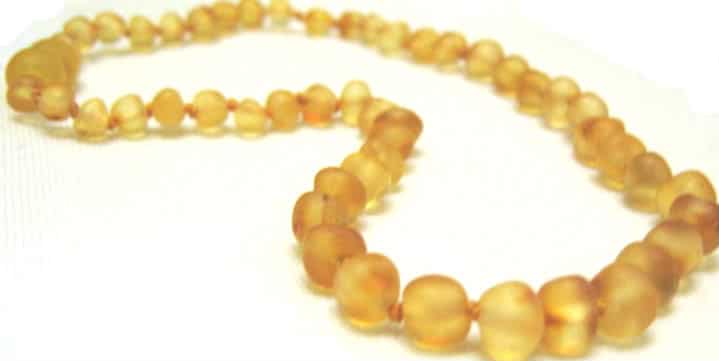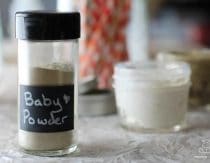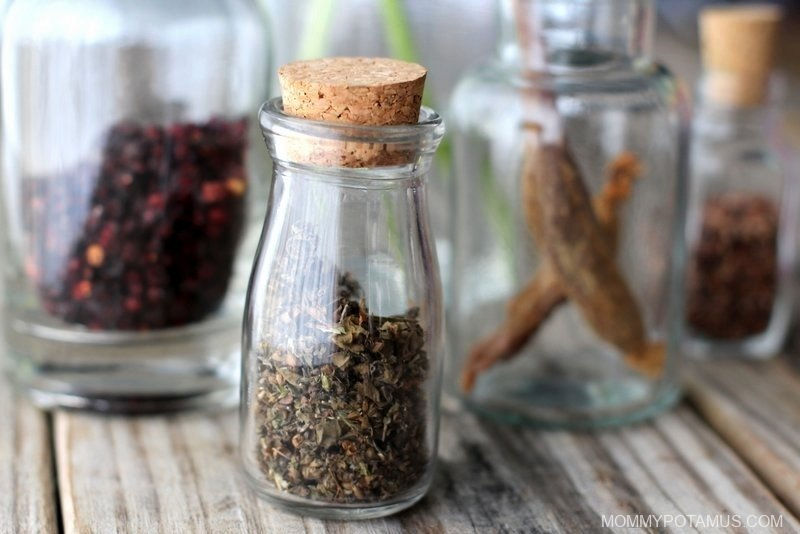
Sometimes called “The Elixir of Life,” holy basil has been revered as one of India’s most powerful and sacred plants for over 3,000 years. (1) Its Sanskrit name, Tulsi, literally means “the incomparable one,” which gives you a sense of how venerated it is.
In addition to being an adaptogen – aka an herb that helps us adapt to stress – it has a wide range of therapeutic properties and traditional uses ranging from supporting skin elasticity to helping balance blood sugar levels.
And because this potent herb has an excellent safety rating, it’s one I always keep on hand.
As always, I want to mention that none of these statements have been evaluated by the FDA, this article is not medical advice, and it is not meant to diagnose or treat any condition. Please talk with your healthcare provider about any herbs or supplements you are considering.
Now that we’ve got that out of the way, let’s dive in!
- What is holy basil?
- 14 Health Benefits of Holy Basil
- 1. Stress Resilience
- 2. Brain Flexibility & Function
- 3. Relaxation
- 4. Immune Balance & Resilience
- 5. Seasonal Allergy Support
- 6. Antioxidant Support
- 7. Analgesic Benefits
- 8. Heart Health & Blood Lipids
- 9. Digestive Support
- 10. Supporting Balanced Blood Sugar Levels
- 11. Mucus Mover
- 12. Collagen & Elastin
- 13. Wound Healing
- 14. Oral Health
- Holy Basil Tea Recipe (Tulsi Tea)
- Does holy basil have any side effects or precautions?
- How much is recommended?
- How to make holy basil tincture
- Items mentioned in this post
- Want more research-backed natural remedies?
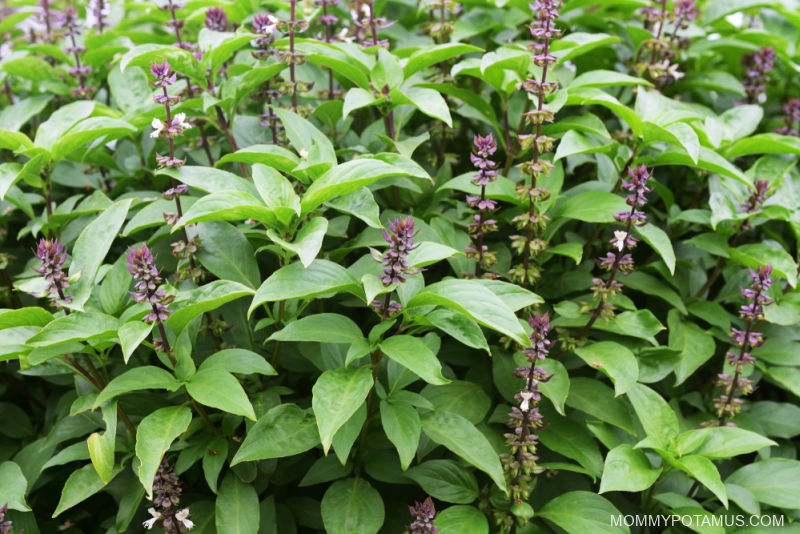
What is holy basil? ^
Not to be confused with sweet basil – the common culinary herb you and I would recognize in a yummy pesto – holy basil is considered the “Queen of Herbs” in India, where it grows abundantly.
In Ayurvedic medicine it is classified as a “rayasana, an herb that nourishes a person’s growth to perfect health and promotes long life.” (2)
If you head to your local health food store right now and ask for holy basil, it’s likely that you’ll find the labels a bit confusing. Some will say that they’re holy basil and use the latin name Ocimum sanctum, while others will also claim to be holy basil while using another latin name, Ocimum tenuiflorum.
On top of that, some may claim to be Krishna or Rama holy basil yet use the exact same latin description. Confusing, right? Here’s you need to know:
- The accepted latin name for holy basil is Ocimum tenuiflorum, but it’s still sometimes called Ocimum sanctum in studies and scientific literature. I’m not sure why, except for possibly to keep us all on our toes.
- The same species, Ocimum tenuiflorum/Ocimum sanctum, has two different varieties: Krishna and Rama. Although there are some slight differences, they’re mostly the same in terms of therapeutic benefits.
- Krishna has a crisp, peppery flavor and dark green to purple leaves and blossoms.
- Rama is more mellow in flavor, and has green leaves and white to light purple blossoms
Though the flowers are sometimes infused into honey or vinegar, it’s the leaves that are prized for their therapeutic benefits.
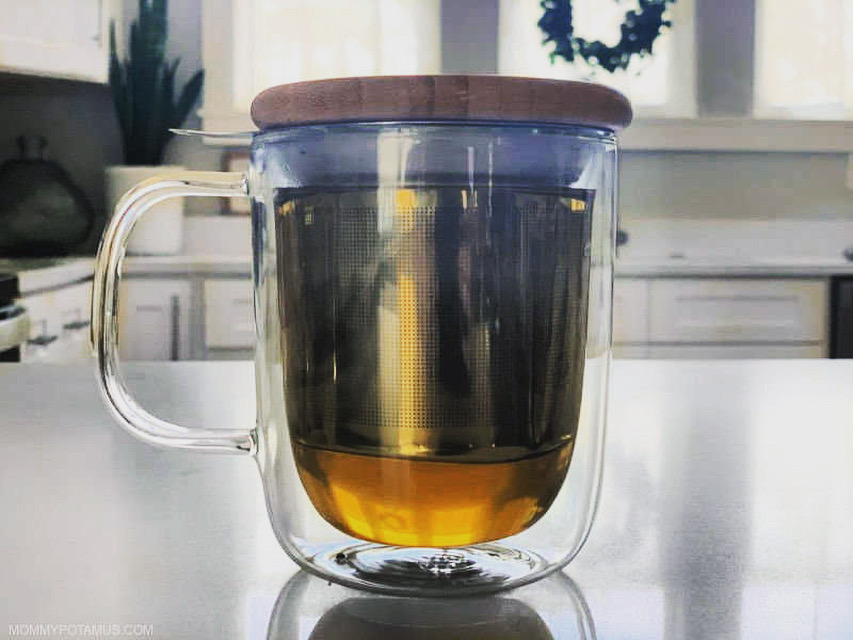
14 Health Benefits of Holy Basil ^
Holy basil is one of those “duct tape” herbs that’s so versatile it’s almost easier to list what it doesn’t do.
It contains a wide range of beneficial flavonoids and antioxidants including carnosol, ursolic acid, rosmarinic acid, apigenin, eugenol, cirsilineol, and cirsimaritin, plus eugenol which can evaporate if boiled. For that reason holy basil tea has to be brewed with care – I’ll share my recipe later in this post.
Traditional medicine and/or current research have found it to be helpful for:
- Stress Resilience
- Brain Flexibility & Function
- Relaxation
- Immune Balance & Resilience
- Seasonal Allergy Support
- Antioxidant Support
- Analgesic Properties
- Heart Health & Blood Lipids
- Digestive Support
- Balancing Blood Sugar Levels
- Moving Mucus
- Collagen & Elastin Support
- Wound Healing
- Oral Health
Let’s take a deeper dive into some of those benefits:
1. Stress Resilience ^
As an adaptogen, holy basil helps us become more emotionally and physically resilient in the face of life’s challenges, including – as this study put it – “the psychological, physiological, immunological, and metabolic stresses of modern living.”
Two compounds in particular – Ocimumoside A and B – appear to play a significant role in the anti-stress effects of holy basil. (3)
Here are some ways holy basil is thought to help:
Enhancing Mood
According to the Journal of Ayurveda and Integrative Medicine, holy basil has mood lifting properties. (4)
Another study found that people who took holy basil extract daily each day felt less anxious and stressed. (5)
Balancing Cortisol Levels (aka the “Stress Hormone”)
When we get stuck in stress mode, our bodies “steal” a hormone called pregnenolone to make extra cortisol. Consistently over-producing cortisol leaves little pregnenolone left to produce other essential hormones, thus leading to hormone imbalance.
Some signs of hormone imbalance include:
- PMS
- Anxiety and/or depression
- Difficulty maintaining a healthy weight
- Fatigue
- Acne
- Digestive problems
- Increased appetite (often in the form of sugar cravings)
- Trouble sleeping
- Irregular cycles
- Low libido
- Feeling easily overwhelmed or burned out
Research suggests that holy basil calms cortisol production, which is thought to free up our bodies to make other essential hormones needed for optimal function. (4)
Physical Endurance & Performance
Traditionally, holy basil has been used to optimize resilience in physically demanding situations, both at a macro (muscular) and cellular (immune system) level. Like other adaptogens such as schisandra berry, it is thought to reduce feelings of fatigue when used regularly during a stressful period.
Both human and animal studies seem to support this use. (6) (7) (8)
2. Brain Flexibility & Function ^
According to this study, “While the reality of daily chemical exposure cannot be denied, regular consumption of tulsi not only helps protect and detoxify the body’s cells and organs, it can also help reduce toxic stress by relaxing and calming the mind and offering many psychological benefits including . . . positive effects on memory and cognitive function.”
Another study found that participants who received a water-based extract of fresh holy basil leaves “demonstrated an improvement in cognitive flexibility, short-term memory and attention.” (9)
3. Relaxation ^
Holy basil is what herbalists call a nervine, which means it has a calming effect on the central nervous system (CNS). It’s revered for its ability to create a sense of peace and calm overstimulation. (1)
4. Immune Balance & Resilience ^
According to Rosalee de la Foret, author of Alchemy of Herbs, “Holy basil helps strengthen and modulate [aka balance] the immune system.” She adds that:
In one double-blind, placebo-controlled study, 22 healthy volunteers were given an extract of holy basil daily. After one month their test results showed significant improvement in several immune system parameters as compared to the placebo group.” (1)
5. Seasonal Allergy Support ^
Herbalists Thomas Easley and Steven Horne, who co-authored The Modern Herbal Dispensatory, recommend tulsi for immune support during hay fever season. (10)
6. Antioxidant Support ^
Excessive amounts of free radicals – which our bodies produce as byproducts of metabolism – cause oxidative stress that can lead to accelerated aging and several disease processes throughout the body. Fortunately, as this Live Science article puts it,
Antioxidants are able to give an electron to a free radical without becoming destabilized themselves, thus stopping the free radical chain reaction. ‘Antioxidants are natural substances whose job is to clean up free radicals. Just like fiber cleans up waste products in the intestines, antioxidants clean up the free radical waste in the cells,’ said Wright.”
Holy basil is rich in a variety of compounds, including polyphenols such as carnosol, ursolic acid, rosmarinic acid and eugenol plus flavonoids such as orientin, vicenin, cirsilineol, apigenin and cirsimaritin – all which have demonstrated powerful antioxidant properties. (11)
7. Analgesic Benefits ^
Research suggests that holy basil may ease discomfort and optimize our inflammatory response by positively impacting the expression of COX-2, which is one of the enzymes responsible for inflammation and pain. (12)
8. Heart Health & Blood Lipids ^
“Holy basil has many beneficial actions on the heart,” writes Rosalee de la Foret, adding that it promotes good circulation can help optimize cholesterol levels when taken daily. (1)
In one animal study, albino rats given fresh holy basil leaves showed a significant increase in “good” cholesterol (HDL-cholesterol) and a reduction in “bad” cholesterol (LDL-cholesterol). (13)
Other research suggests that holy basil may help balance blood pressure. (14) (15)
9. Digestive Support ^
Like our common culinary basil, holy basil has many positive effects on the digestive system. As a slightly warming and aromatic herb, it is often paired with dried ginger to relieve symptoms of stagnant digestion, such as bloating, gas, decreased appetite, and nausea. Herbalists also use tulsi for heartburn.” (1)
10. Supporting Balanced Blood Sugar Levels ^
Research suggests that holy basil helps balance blood sugar levels via “dual cellular mechanisms that optimize insulin sensitivity. (6) (16) (17) (18)
For this reason, diabetics who are taking blood sugar lowering medication need to talk with their doctor before taking holy basil, as it may amplify the effect of medication.
11. Mucus Mover ^
Holy basil is classified as an expectorant by herbalists, which meant that it supports the body in loosening mucus so that it can be cleared out.
12. Collagen & Elastin ^
Have you ever heard of inflamm-ageing? It’s basically accelerated skin aging that happens due to chronic inflammation.
Since chronic inflammation is often triggered by emotional and environmental stressors, holy basil is thought to help with inflamm-ageing by making us more resilient to stress in general.
Several of the compounds in holy basil – particularly ursolic acid, rosmarinic acid, and eugenol – are potent antioxidants that help counteract free radicals directly.
Research suggests that they may also help the body maintain healthy hyaluronic acid levels, which is the “gel” part of our skin matrix that gives skin its suppleness. It can absorb up to 1,000 times its weight in water, which helps our skin hold in moisture.
It also contains compounds that help protect collagen (which gives our skin structure) and elastin (which gives it elasticity), which is probably why it’s being used in an increasing number of skincare formulations. (19)
13. Wound Healing ^
Research has shown that holy basil optimizes the breaking-strength of a wound, which is the amount of force it can withstand before breaking. It’s thought that holy basil’s positive impact on skin integrity and elasticity plays a role in how it supports wound healing. (4)
14. Oral Health ^
Holy basil tea is also traditionally used as a mouthwash. Though more research is needed, current studies suggest that it does have a positive impact on the oral microbiome. (20) (21)
Holy Basil Tea Recipe (Tulsi Tea) ^
Equipment
- infuser basket
- handled mug
- fine mesh strainer
- small plate or tea cover
- small pot
Ingredients
- 1 cup water
- 1 tsp dried holy basil leaves
Instructions
- Place your tea in an infuser basket and place it inside a mug. If you don’t have an infuser basket, you can make the infusion and then strain the liquid through a fine mesh strainer into your mug.
- Boil the water and pour it over the herbs. Cover with a small plate (or a tea cover if you have one) and allow the tea to infuse for no more than 5-10 minutes in order to preserve the more delicate constituents
- Remove the infuser basket and sweeten the tea with honey, maple syrup, etc. if desired before serving.
Notes
Does holy basil have any side effects or precautions? ^
According to the Botanical Safety Handbook, 2nd edition, holy basil is a Safety Class 1A herb – the safest rating possible. It is described as:
“Herbs that can be safely consumed when used appropriately.
- History of safe traditional use
- No case reports of significant adverse events with high probability of causality
- No significant adverse events in clinical trials
- No identified concerns for use during pregnancy or breastfeeding
- No innately toxic constituents
- Toxicity associated with excessive use is not a basis for exclusion from this class
- Minor or self-limiting side effects are not bases for exclusion from this class”
With that said, a few herbalists offer caution for certain situations. Rosalee de la Foret, author of Alchemy of Herbs, writes that “Holy basil may have an antifertility effect on both men and women and therefore should not be used regularly by pregnant women or couples wishing to conceive.”
She also adds that because of its slight blood thinning effect – which is most often considered a positive attribute – it “should not be taken by those who are currently taking warfarin.”
In Herbal Medicine for Beginners, authors Katja Swift and Ryn Midura advise that “if you take blood sugar management pharmaceuticals, monitor your glucose levels regularly because tulsi can have a significant blood sugar-lowering effect.”
Always check with your doctor before adding herbs to your diet, and listen to your intuition to help you make the best choice for yourself.
How much is recommended? ^
Adaptogens are herbs rather than pharmaceutical drugs, so there are no “dosages” as we typically understand them. Holy basil is used as both a culinary and medicinal herb in many cultures, so the “dosage” varies quite a bit from person to person.
According to Rosalee de la Foret:
It will be difficult to take too much of this herb. I’ve seen daily recommendations of up to 4 ounces (approximately 2 cups)!” (1)
However, herbalists do share knowledge about what therapeutic ranges seem to produce a beneficial effect for most people. The suggestions below are recommendations from two of my favorite herbal books: Adaptogens in Medical Herbalism and Adaptogens: Herbs for Strength, Stamina and Stress Relief.
- Tincture – For a 1:5 or 1:2 extract, it is suggested to take 40-60 drops three times per day. (2) You’ll find a link to the tincture I recommend below plus a recipe for making it at home. Best taken between meals.
- Tea – Two to four cups daily. (22) Recipe below.
- Standardized extract supplement – When it includes at least 2.5% ursolic acid, the therapeutic dosing range is considered to be between 200 to 500 mg daily.” (22)
As always, please check with your health care provider before using any herbal remedy.
How to make holy basil tincture ^
If you’d rather buy pre-made holy basil tincture, this is a good one. The makers recommend adding approximately 1/8 teaspoon to 2 ounces of water, two to four times per day.
To make a 1:5 tincture: Mix 1 ounce dried holy basil leaf (by weight) with 5 ounces (by volume) of 60 proof or higher alcohol and allow it to infuse for six to eight weeks. Strain and store in a dark glass dropper bottle. As mentioned above, recommendations are 40-60 drops three times per day.
To make a 1:2 tincture: Mix 1 ounce dried holy basil leaf (by weight) with 2 ounces (by volume) of 60 proof or higher alcohol and allow it to infuse for six to eight weeks. Strain and store in a dark glass dropper bottle. Recommendations are 40-60 drops three times per day.
Items mentioned in this post ^
This article was medically reviewed by Dr. Scott Soerries, MD, Family Physician and Medical Director of SteadyMD. As always, this is not personal medical advice and we recommend that you talk with your doctor.
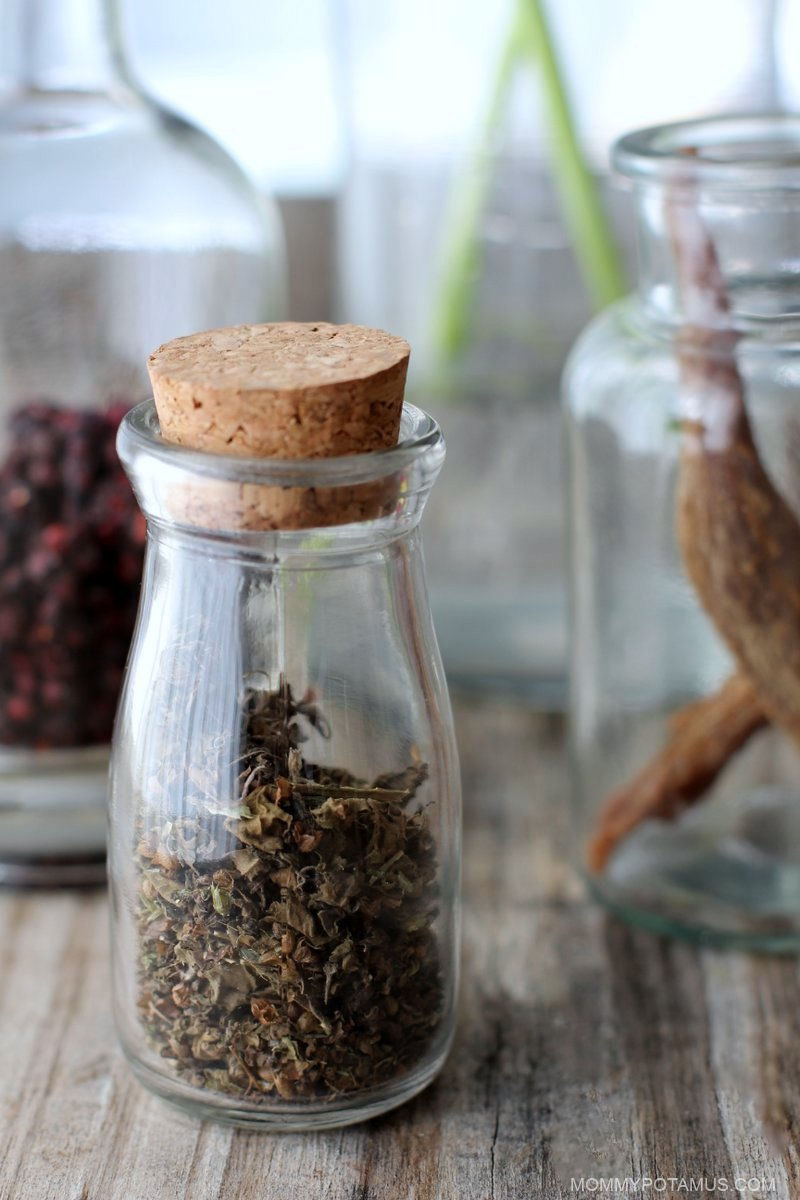
Want more research-backed natural remedies? ^
No problem, I’ve created a free ebook for you – Kitchen Apothecary: 25+ Natural Remedies Using Ingredients From Your Pantry – as a gift for signing up for my newsletter. You’ll also get updates when I post about safe essential oils for pregnant/breastfeeding mamas, exclusive gifts and coupons (I was able to give away a jar of free coconut oil to anyone who wanted it recently!), plus other goodies.
Sign up using the form below.
Sources:
1. Foret, Rosalee de la. (2017) Alchemy of Herbs: Transform Everyday Ingredients into Foods and Remedies That Heal
2. Winston, David. (2007) Adaptogens: Herbs for Strength, Stamina & Stress Relief
3. Ahmad, Ausaf et. al. (2012) Novel Ocimumoside A and B as anti-stress agents: modulation of brain monoamines and antioxidant systems in chronic unpredictable stress model in rats.
4. Cohen, Marc (2014) Tulsi – Ocimum sanctum: A herb for all reasons
5. Bhattacharyya, D. et. al. (2008) Controlled programmed trial of Ocimum sanctum leaf on generalized anxiety disorders
6. Negar Jamshidi and Marc M. Cohen (2017) The Clinical Efficacy and Safety of Tulsi in Humans: A Systematic Review of the Literature
7. Maity, T.K. et. al. (2000) Effect of Ocimum sanctum roots extract on swimming performance in mice
8. K P Bhargava and N Singh (1981) Anti-stress activity of Ocimum sanctum Linn
9. Sampeth, S. et. al. (2015) Holy basil (Ocimum sanctum Linn.) leaf extract enhances specific cognitive parameters in healthy adult volunteers: A placebo controlled study
10. Thomas Easley and Steven Horne (2016) The Modern Herbal Dispensatory
11. Kelm, et al. (2011) Antioxidant and cyclooxygenase inhibitory phenolic compounds from Ocimum sanctum Linn
12. Mallikarjun, Sajjanshetty et. al. (2016) Antimicrobial efficacy of Tulsi leaf (Ocimum sanctum) extract on periodontal pathogens: An in vitro study
13. Yates, Beverly. Holy Basil (Ocimum sanctum) An Overview of the Research and Clinical Indications
14. Singh, S. et. al. (2001) Effect of Ocimum sanctum fixed oil on blood pressure, blood clotting time and pentobarbitone-induced sleeping time
15. Bhargava. A. et. al. (2013) To Study the Effect of Holy Basil Leaves on Low Blood Pressure ( Hypotension ) Women Aged 18-30 years
16. Nyarko, A.K. et al. (2002) Extract of Ocimum canum lowers blood glucose and facilitates insulin release by isolated pancreatic beta-islet cells
17. Vats, V. et al. (2004) Ethanolic extract of Ocimum sanctum leaves partially attenuates streptozotocin-induced alterations in glycogen content and carbohydrate metabolism in rats
18. Liu, J.P. et. al. (2004) Chinese herbal medicines for type 2 diabetes mellitus
19. Chaiyana, Wantida et. al. (2019) Ocimum sanctum Linn. as a natural source of skin anti-ageing compounds
20. Singh, Malvika (2021) Tulsi: From the desk of a periodontist
21. Hosamane, Manasa (2014) Evaluation of holy basil mouthwash as an adjunctive plaque control agent in a four day plaque regrowth model
22. Yance, Donald (2013) Adaptogens in Medical Herbalism


 Tried this recipe?
Tried this recipe? 